>>Download Yoga Mudras Free PDF!
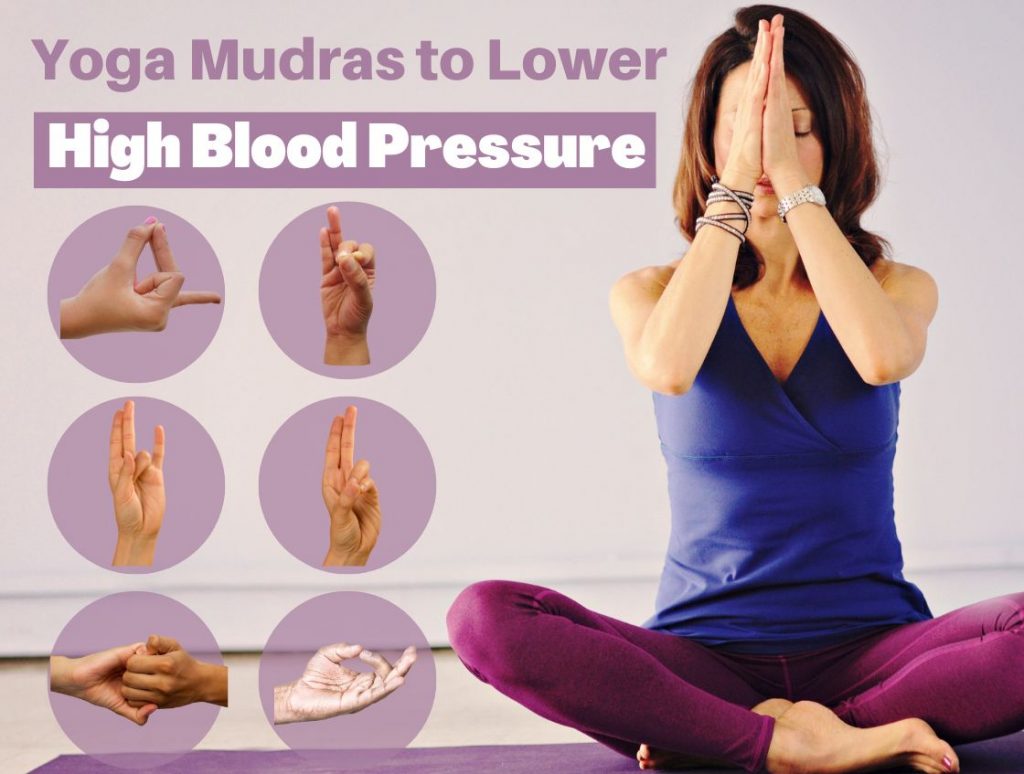
High blood pressure, also known as hypertension, is a common cardiac condition that can cause heart attacks, strokes, dementia, and even death. It is frequently referred to as a “silent killer” since it causes arterial blood pressure to rise to abnormally high levels.
There are various causes that might result in high blood pressure, however, the most prevalent ones are inactive lifestyle, high sodium intake, obesity, age, genetic factors, lifestyle habits, smoking, stress, etc. Long-term undiagnosed high blood pressure can result in several health issues.
While there are blood pressure medications, they are not recommended for long-term use, and taking too many tablets shouldn’t become a habit. Your high blood pressure can be managed with the aid of a few mudras of yoga.
By making use of the natural practices of mudra yoga, you can take proactive measures to control your blood pressure and maintain your health.
Can mudras really help in high blood pressure?
Yes, the results of some research studies show that mudras may modestly reduce high blood pressure. Mudras in yoga are equivalent to relaxation therapy that reduce stress and anxiety. It can help hypertension patients in lowering the risk of heart problems, chronic kidney disease, strokes, etc.
It has been scientifically proven that mudras can be an effective complementary treatment in keeping high blood pressure in control. A June 2020 study has revealed that 15 minutes of practice of Apana Vayu mudra can successfully reduce high blood pressure in hypertension patients.
Another study published in 2016 suggested that hand mudras can be used in an emergency when medical services are not immediately available.
Also read: What does yoga do to control your high blood pressure?
Blood flow resistance in your arteries and the volume of blood your heart pumps out are both factors that affect blood pressure. Your blood pressure rises in direct proportion to how much blood your heart pumps and how small your arteries are.
Reviewing your systolic and diastolic blood pressure values will allow a medical person to identify high blood pressure and decide on the best course of therapy for you.
Systolic pressure is the pressure in the arteries as a result of the heart’s pumping blood through them. It is the number that is written on the top.
Diastolic pressure is the pressure in the arteries when the heart is at rest in between beats. It is the number that is written on the bottom.
Thus, any combination of numbers above 120/80 is considered to be high blood pressure.
Though there are many medicines available to keep high blood pressure in control, long-term consumption can lead to side-effect.
How do mudras control high blood pressure conditions?
When we do mudras that correspond to the heart, it produces relaxing effects on muscles surrounding small blood vessels. It results in the expansion of narrow blood arteries which in turn allows blood to flow more easily. This way doing mudra hand gestures controls high blood pressure.
Mudras are frequently used in yoga to direct the flow of energy through the subtle body and are practised in combination with meditation and pranayama. It is assumed that particular parts of the hand can activate specific parts of the brain and heart. The body’s energy pattern can be changed by sending a signal to the brain. This is accomplished through controlling the movement of prana vayus in the subtle body.
From an ayurvedic point of view, high blood pressure primarily involves a disruption of Vata dosha with pitta and kapha being the secondary doshas. In vata dosha types, Vyana Vayu is more specifically responsible for controlling blood pressure in arteries. Mudras such as vyana vayu mudra lower high blood pressure by balancing the air and ether (or space) elements of the body.
Keeping the above in mind, below are 6 effective mudras that can help lower high blood pressure.
Read more: 6 yoga poses to lower high blood pressure
1. Apana Vayu Mudra to prevent heart attack and relieve heart heaviness
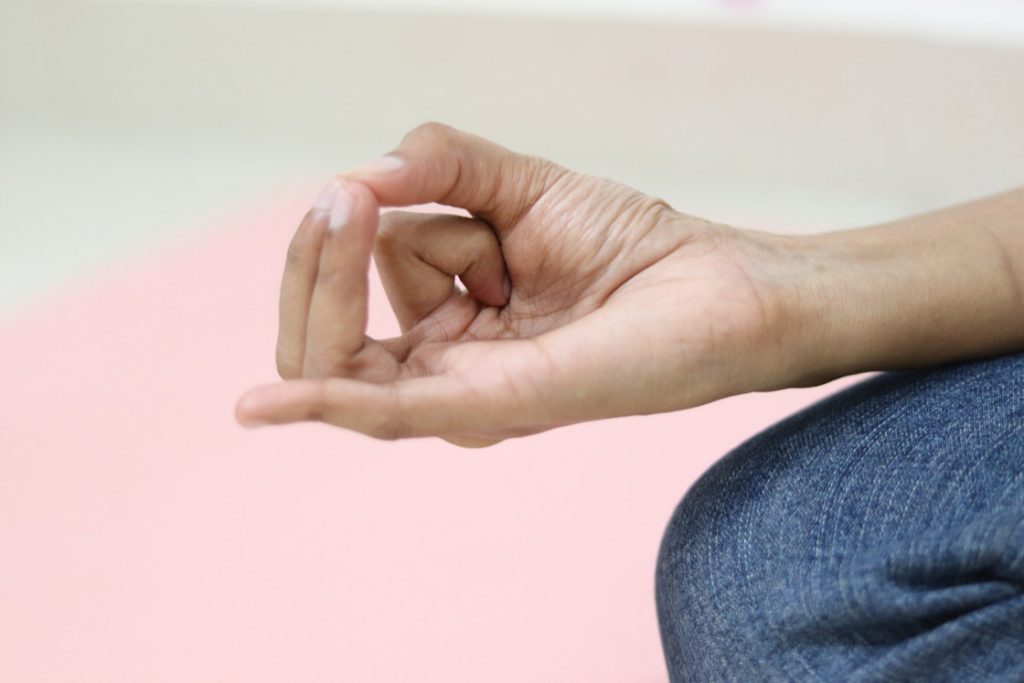
Apan vayu mudra is one the most effective mudra for managing high blood pressure. It is also called the Mrit-Sanjeevni Mudra means “one that brings back to life from death” as it is extremely effective in preventing an oncoming heart attack.
This mudra aids in the treatment of breathing problems, angina pectoris, heart attacks, heart failure, etc. It’s formed by the combination of Apana and Vayu mudra.
The Vayu mudra portion of this mudra will instantly open the blocked artery and provide it with oxygen, and the Apana mudra component will eliminate these toxins in the guise of clogs and obstructions to enhance blood flow.
Steps to perform
- Sit in a meditative position of your choice; such as Easy Pose (Sukhasana), Lotus Pose (Padmasana), Hero Pose (Virasana), or Thunderbolt Pose (Vajrasana).
- Your back should be straight and your shoulder should be away from the ears to avoid slouching.
- You can sit on a yoga mat, bolster, cushion, or even on your bed as it will provide you with more support and padding.
- Place your hands on the knees with palms facing up.
- On both hands, join the tips of the thumb, middle, and ring finger while bringing the tip of the index finger to the base of the thumb. The remaining finger, i,e, little finger, should remain comfortably straight.
- Close your eyes and take deep breaths.
- Hold this mudra for at least 10-15 minutes.
Additional Tips
- People with an excessive amount of Kapha Dosha or who have a Kapha constitution should exercise caution because it elevates the earth element.
- This mudra should be discontinued after you sense your issue has been resolved because it may disrupt the harmony of the other elements.
2. Surya Mudra to reduce cholesterol level
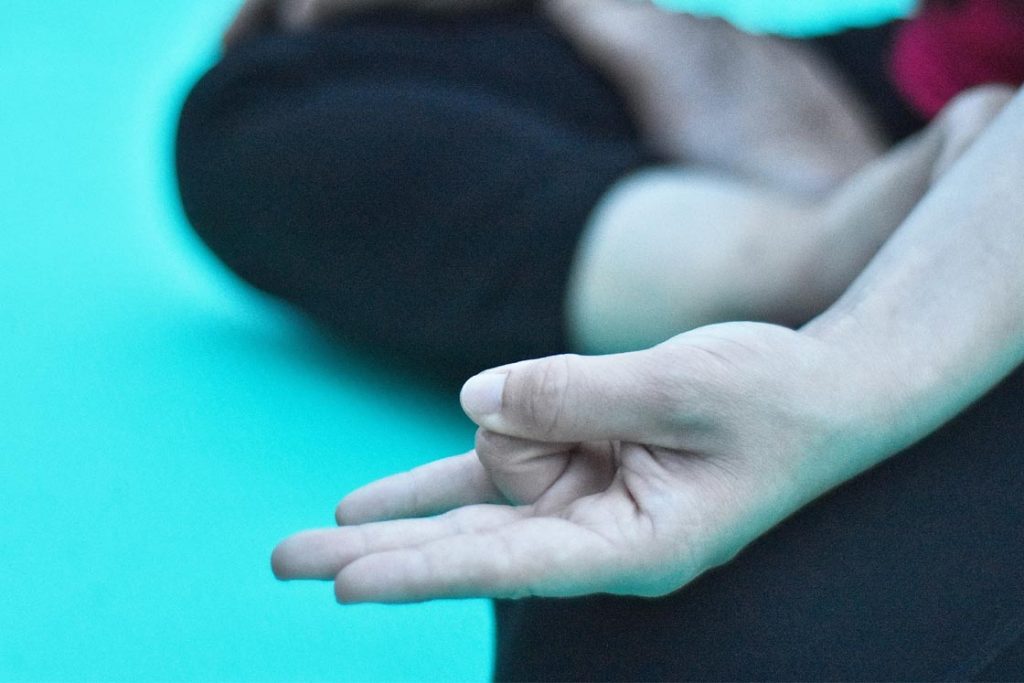
The thyroid gland’s metabolic process is accelerated when you do Surya mudra. The risk of a heart blockage is subsequently decreased as a result of this mudra’s assistance in lowering harmful cholesterol levels.
Improved metabolism and reduced cholesterol impact heart health and balance the fluctuations of blood pressure.
Steps to perform
- Sit on a yoga mat in a meditative position such as lotus pose (padmasana) or easy pose (sukhasana).
- Keep your back straight and look ahead to align your head with the spine.
- Fold your ring finger so that it touches the base of the thumb. Place your thumb on the folded ring finger.
- Keep the rest of the fingers comfortably straight.
- Make sure pressure on the ring finger is moderate to increase the fire element but try not to overdo it.
- Place your hands on your thighs or knees with palms up and close your eyes.
- Hold the mudra for a minimum of 10 minutes.
Additional Tips
- You can use this mudra for longer periods throughout the winter to build internal heat because it boosts the fire element.
- To prepare for the mudra, drink some water or always have a bottle nearby.
- The surya mudra’s effects will be enhanced by practising pran Mudra.
- To combat the Surya mudra’s heat, practice the Varun and Gyan mudras.
3. Ganesh Mudra to improve blood circulation
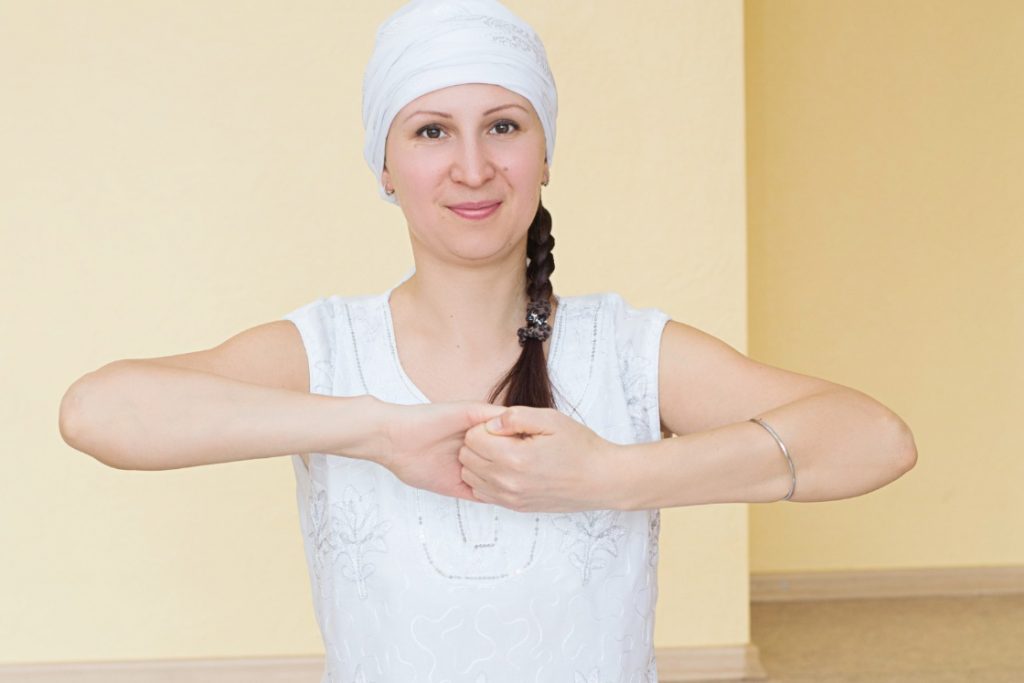
When performed frequently, ganesha mudra hand position is thought to reduce stress and improve mood. High cholesterol sufferers must use this mudra.
This is a great calming mudra to use during meditation. Heart disease risk is decreased by meditation-induced mental calm and heart-centred awareness.
By using the ganesha mudra, you can fortify your heart, enhance blood flow, and activate the heart chakra.
Also read: Hand mudras to use during meditation
Steps to perform
- Sit in any comfortable meditative posture such as Vajrasana, Sukhasana, Padmasana, etc.
- Partially fold the fingers of your left hand, as you position it in front of your chest with the palm facing outward.
- Make a similar formation with the right hand’s fingers and take hold of the left hand. The right-hand palm will be facing inward. Make sure both hands are held together in a tight grasp with the fingers firmly clasped.
- Close your eyes and take a deep breath in. As you exhale, draw your hands against each other but without letting go of the grasp. Your shoulders and chest will feel stretched.
- Relax the pul as you finish the exhale.
- Repeat the entire process 5-6 times.
- Do the exercise while switching the hand positions.
- Practice the entire mudra for 10-15 minutes in one sitting.
Additional Tips
You can chant the Ganesha Mantra to center your thoughts and enhance the power of this mudra. The mantra is, “Om Gan Ganapataye Namah” which means ‘I bow down to you in gratitude’.
4. Prana Mudra to boost immunity
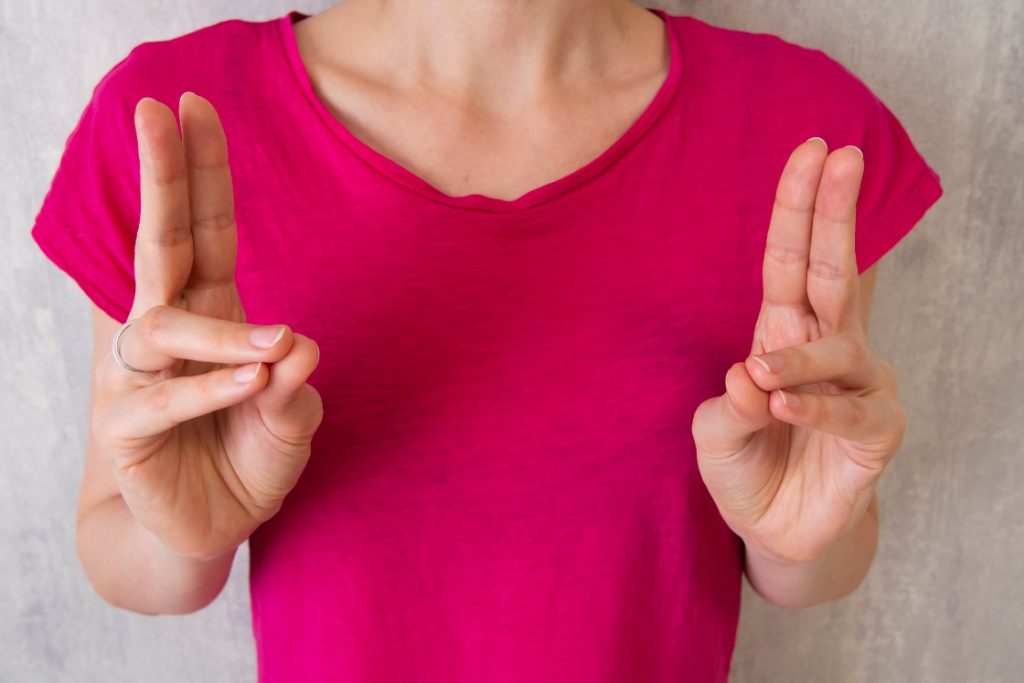
Due to its capacity to awaken dormant energy in the body, prana mudra is considered to be one of the most important mudras. The flow of breath, heart rate, circulatory system, body temperature, nervous system, and sense of grounding are all strongly affected by prana mudra hand gesture.
Prana mudra strengthens the immune system and lessens vein congestion. This in turn brings your blood pressure returns to normal. It will also take away anxiety, rage, and unease if you do this frequently.
Steps to perform
- Sit in any comfortable meditative posture such as Vajrasana, Sukhasana, Padmasana, etc.
- Keep your back straight and look ahead to align your head with the spine.
- Bring the tips of the little and ring fingers of both hands to join the tip of the thumb. Keep gentle pressure on the fingertips to avoid discomfort.
- The remaining fingers will be kept comfortably straight.
- Place the hands on your knees with palms facing upwards and close your eyes.
- Hold this mudra for at least 15-20 minutes.
Additional Tips
- Prana mudra can also be used with pranayama to raise the prana level into higher chakras.
- It should be performed just before sitting for meditation to promote a constant flow of Prana throughout the entire sitting.
- As prana mudra sets off all of the body’s metabolic processes, doing it at night may prevent you from getting enough sleep. As a result, practising it at night is not advised.
5. Vyana Mudra to maintain blood pressure and improve prana flow
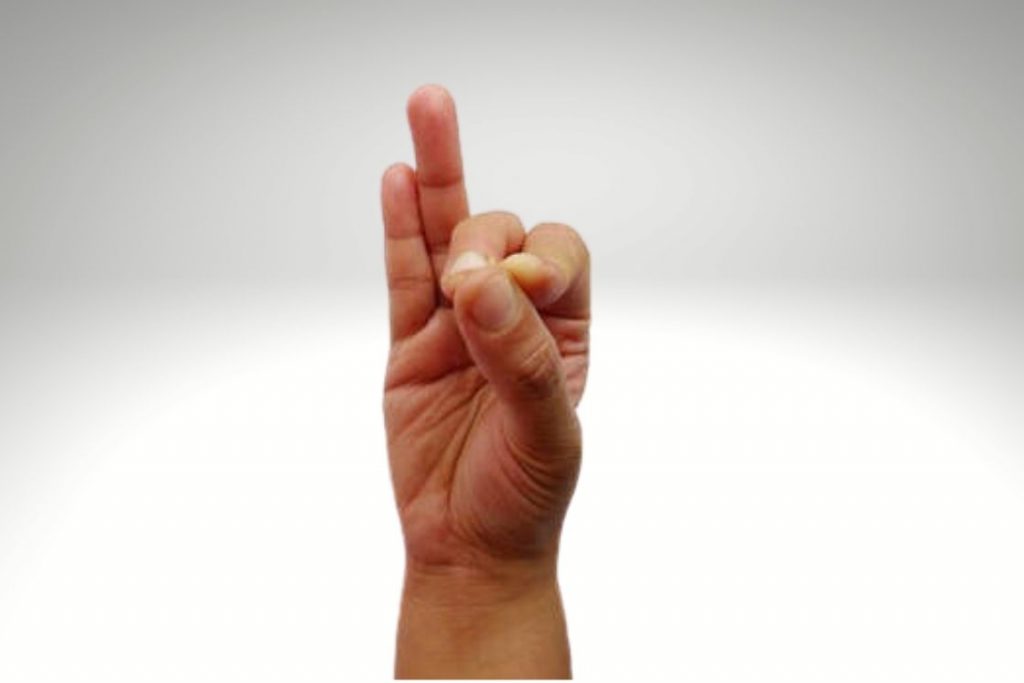
If your sedentary lifestyle or less physical activity is the cause of high blood pressure, you should do vyana mudra. Also known as vata karak mudra, it balances disturbed vata dosha in the body. As per Ayurveda, imbalance in vata dosha is a primary cause of high blood pressure.
This mudra reduces the risk of damage to the heart and coronary arteries, including heart attack, heart disease, and congestive heart failure.
Do vyana mudra with meditation for 15 minutes at one stretch to lower high blood pressure. To do it, come in a cross-legged position, with your palm facing up – place your hands on your thighs. Now join the tip of the index and middle finger with the thumb tip and keep the rest two fingers in normal position. This is vyana mudra.
Vyana mudra increases the flow of prana vayus in the entire body which in turn makes you feel more active and removes fatigue, laziness, and dizziness.
6. Akash Mudra to reduce stress and anxiety
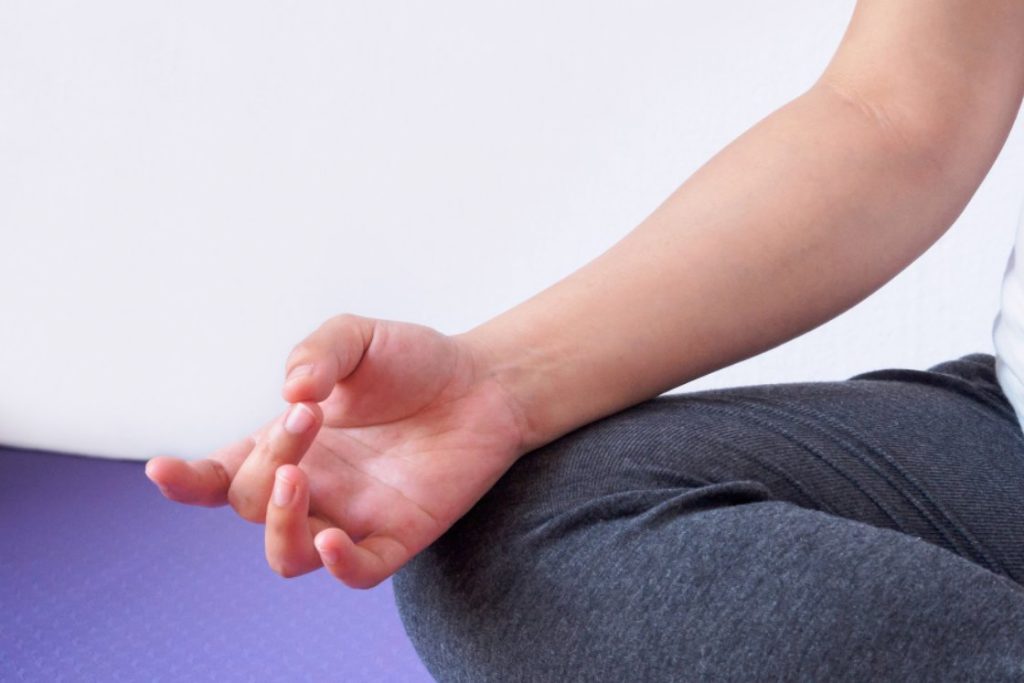
Practising akash mudra will enhance the space element of the body. It helps with body detoxification, lowers high blood pressure, and enhances the removal of metabolic wastes from the body. Additionally, it removes negative thoughts and aids in focusing the mind, which can be a natural way to reduce stress and hypertension.
Steps to perform
- Sit in any comfortable meditative posture such as Vajrasana, Sukhasana, Padmasana, etc.
- Keep your back straight and look ahead to align your head with the spine.
- Place your hands on the knees with palms facing upwards.
- Join the middle finger and the thumb at their tips and leave the remaining finger comfortably straight.
- Hold this mudra for at least 10-15 minutes.
Additional Tips
People suffering from the Vata (wind) imbalance should practice it moderately.
Bonus practice: Meao Mudra to control both high and low blood pressure
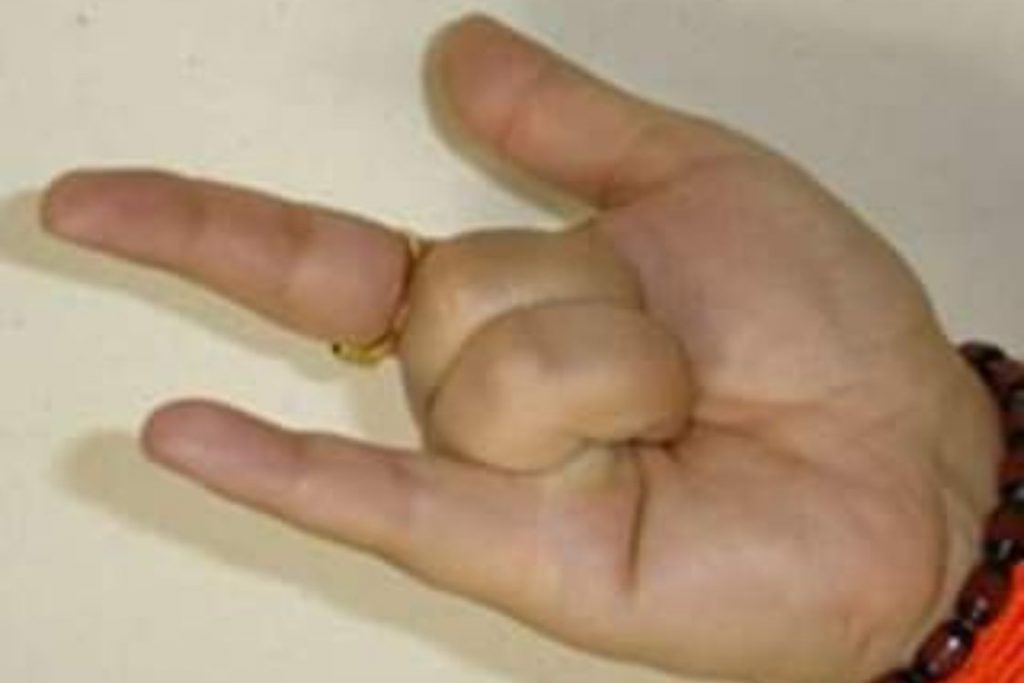
If someone suffers from high and low blood pressure both time to time, then meao mudra is best suitable for them to keep blood pressure under control.
To do meao mudra, open your palm facing up and straighten your fingers. Now curl your middle and ring fingers towards the centre of palm. Press the palm with these fingertips. Keep all other fingers (index, little finger and thumb) extended or in a natural position. Hold this mudra for 10 to 15 minutes at one stretch.
Conclusion
Apana mudra and vyana mudra are the two most effective mudras for high blood pressure and any problems related to heart and blood circulation. Do these mudras for 15 minutes at one stretch with meditation to increase their effectiveness.
Even though high blood pressure is a serious medical concern, you can easily keep it in check with simple mudras. They can be performed anywhere and will give you immense benefits. They are a natural way of therapy that will regulate your heart rate and blood pressure and also keep you calm and stress-free.

